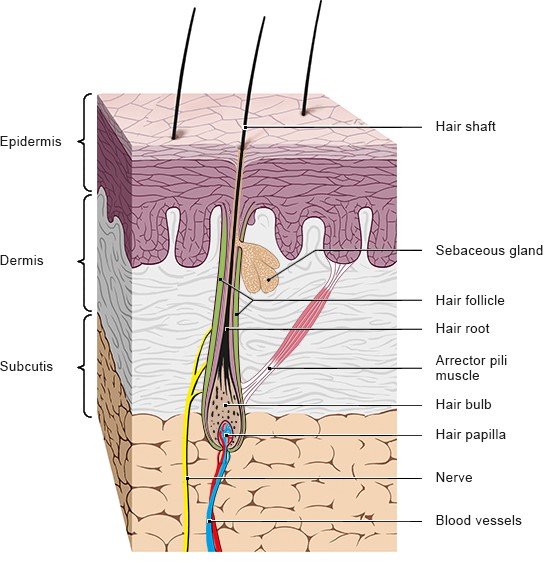Different types of hair
Aside from a few places, like the palms of our hands or the soles of our feet, the entire surface of our body has hair on it. The two main types of hair are the shorter and thinner "vellus" hairs (peach fuzz) found on the body and the longer and thicker "terminal" hairs. Examples of terminal hairs include the hair on your head, facial hair, eyelashes, eyebrows, pubic hair, chest hair and belly hair.
How much of each hair type you have varies from person to person and also depends on your age and sex. Children’s bodies mostly have vellus hair, for instance. About 30 percent of the body’s surface is covered with terminal hair in women, compared to about 90 percent in men.

